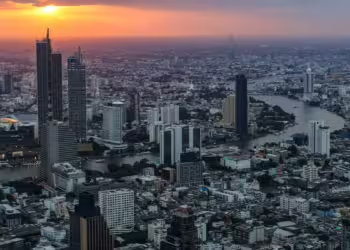No products in the basket.
The World Bank projects that growth prospects for 2017 and 2018 remain positive for developing east Asia and the Pacific. Favourable external factors include stronger growth in advanced economies, a moderate recovery in commodity prices, and a strengthening of global trade growth.
Growth in the EAP region strengthened marginally to 6.4 percent in 2017, 0.2 percentage point higher than expected. The region continued to be a major driver of global growth, accounting for more than a third of it in 2017, mostly because of China’s significant contribution.
In the rest of the region, including Association of South-east Asian Nations economies, growth in 2017 will be slightly faster at 5.1% in 2017 and 5.2% in 2018, up from 4.9% in 2016.
Regional growth is projected to gradually slow to 6.2 percent on average in 2018-20. That is broadly in line with previous forecasts, with the structural slowdown in China outweighing a modest further cyclical pickup in the rest of the region.
The outlook assumes a modest continuing recovery in commodity prices, strong external demand, and moderately tighter, but still supportive, global financing conditions.
Robust growth will mean that poverty is expected to continue to fall across Asia. Larger economies are expected to fare well. China’s gradual rebalancing away from investment and towards domestic consumption will continue, with growth projected to slow to 6.4% in 2018 and 2019.
Projected Gradual Slowdown in China Outweighs Pickup in Rest of Region
The structural slowdown in China is expected to outweigh a modest further cyclical pickup in the rest of the region. The region is expected to continue to be a major driver of global growth and account for more than a third of it in 2017-20, mostly because of China’s significant (30 percent) contribution.
Thailand and Malaysia are expected to grow more rapidly than expected, due to stronger exports and tourism for the former, and increased investment in the latter.
Indonesia’s gains in real wages are fuelling strong consumption, while Vietnam’s growth is boosted by a rebound in agriculture and manufacturing. The Philippines’ economy is projected to expand at a slightly slower pace than in 2016, partly due to the slower-than-expected implementation of public investment projects.
Potential Growth on Track to Decelerate
Beyond the forecast horizon, regional potential growth is anticipated to decelerate to under 6 percent in 2018-27, as demographic pressures in China and other large economies (for example Thailand) dampen labor supply and slow productivity growth, and as capital accumulation slows. Growth rates in China and in the rest of the region are expected to gradually converge. Source : http://blogs.worldbank.org/developmenttalk/economic-outlook-east-asia-and-pacific-six-charts-strong-growth-easing-moderately
Discover more from Thailand Business News
Subscribe to get the latest posts sent to your email.














